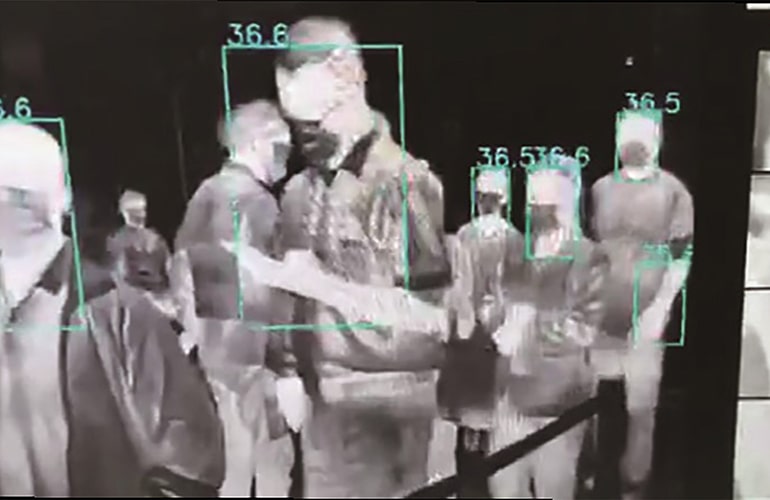It isn’t easy to find such a widespread system that covers practical applications in all spheres of human activity as thermal imaging systems. The origin of systems, as exotic, fabulously expensive for military purposes, has now passed into everyday life and is used everywhere. Nevertheless, the principle of operation is the same for all systems. Thermal imagers measure remotely the temperature of any surfaces at which the screen is directed. The thermal image of the object is displayed on the screen. The greater the difference in the readings of the surfaces, the more contrasting the image. It can be three-dimensional, color, or monochrome, depending on the model and preferences. The thermal imager can store data and transfer it for further processing. The thermal imagers are compatible with iOS and Android. Thermal imagers are distinguished by the scope of use, accuracy, viewing angle, range, degree of mobility, temperature range. May give sound or light signals to indicate critical areas. Many models can send alarm messages to their operators according to a predetermined pattern.
Thermal Imaging Systems in construction
Thermal imaging systems in construction are used to detect leaks of heat, water, gas. The most popular test was detecting defects in the insulation of walls, roofs, windows, and doors, through which heat escapes from buildings. Demonstration of the thermal image before and after additional insulation shows very clearly the efficiency of the work. The thermal imager will detect damp, moldy walls hidden from direct view. Invisible leaks in ceilings, cold bridges, freezing points are clearly visible on the monitor of the thermal imager, even if they are hidden under a layer of plaster or drywall. This allows you to repair a small area without high costs and to open the entire structure. Defects of thermal heating systems of the house are very clearly visible on thermal images. To do this, you do not need to open all the places where the pipes are laid. The thermal imager allows you to pinpoint the exact location of the repair. The infrared system perfectly locates electrical congestion points. This allows the situation to be corrected before the onset of a critical load and avoid a fire. Thermal imaging systems are good for both the renovation of existing buildings and the construction of new ones. For example, using a thermal imager to assess the degree of drying of walls, the supervisor has the opportunity to take measures to speed up the process and put the construction project into operation ahead of schedule. The infrared sensor perfectly sees voids in wall masonry or foundation defects without destroying them. It is possible to check whether the walls were reinforced with iron structures during construction. These methods significantly save time, resources, and materials during construction. With the help of a thermal imager, it is easy to control plasterers’ work, as the thermal imager detects the detachment of the putty mixture from the wall in the event of a violation of the technology. Note that the thermal imager works great in low light conditions, for example, in a basement or on a construction site, when the lighting has not yet been applied.
Thermal Imaging Systems in medicine
Infrared thermal imagers are used to diagnose problems of peripheral blood circulation, in rheumatoid conditions, in diseases of the musculoskeletal system, in sports medicine to assess injuries, in problems with the mammary and thyroid glands. Inspection using a thermal imaging system has several advantages over other research methods. For examination, you do not need to touch the patient’s skin and be close to him. In the case of infectious diseases, this is undoubtedly a big plus. The second plus is that the study is not invasive and does not traumatize the patient morally and physically. It is safe, as it does not irradiate patients, unlike X-rays and MRI. Infrared thermography cannot be used instead of other research methods, but it perfectly complements the data already obtained and tracks the dynamics of the patient’s recovery. Unlike MRI, this study is more affordable in price and available to a wider range of patients. In the light of recent events with the pandemic, we note the vital role of thermographs used in hospitals for the rapid assessment of the condition of patients and emergency care. In emergency rooms overcrowded with many people, thermographic systems allow you to quickly sort patients according to the severity of the condition and thus make it possible to receive emergency care on time. The use of thermal imaging systems in hospitals significantly saves staff time and reduces waiting times for patients. Note that the use of thermal imaging systems does not cure diseases but significantly facilitates the patient’s condition.
Thermal Imaging Systems in other spheres
Thermal imaging systems are in demand in everyday life. All security structures, hunters, airsoft players, firefighters, and rescuers actively use them. Infrared systems are used to navigate vehicles, including crewless vehicles. Naturalists, rangers, veterinarians, photographers use thermal imagers. They are very fond of engineers for detecting short circuits and overheating points. Plumbers, electricians use them for work. In everyday life, confectioners, mothers to take care of the child, use infrared systems. Scientists for research, large factories for process automation and temperature control, companies monitoring oil spills and gas leaks, use thermal imagers.
Modern production methods and technologies make thermal imagers available for mass use. Thanks to them, humanity receives additional research methods and comfort in everyday life.
